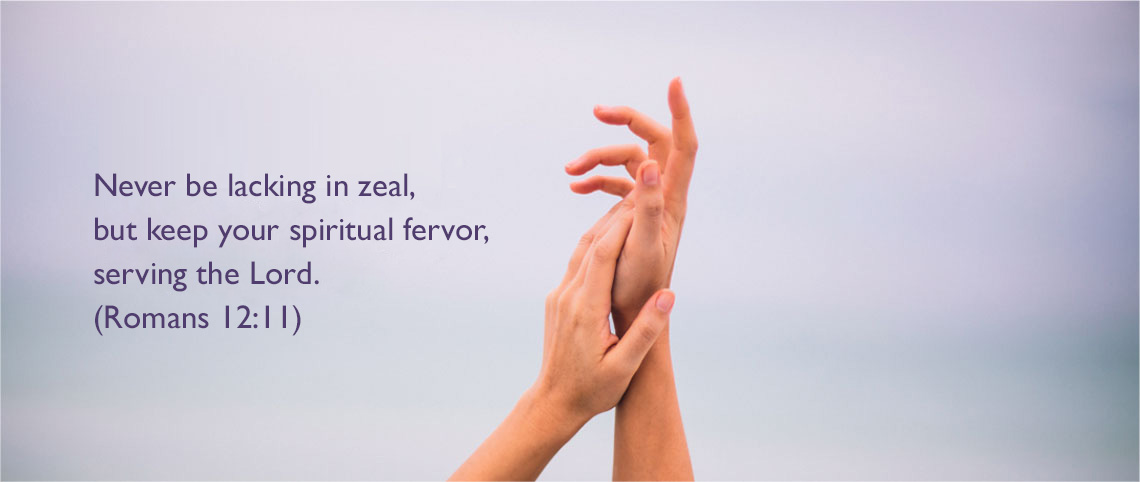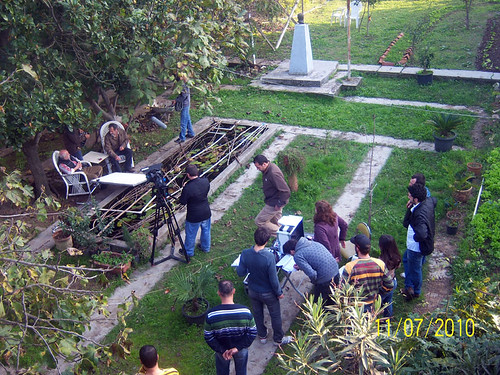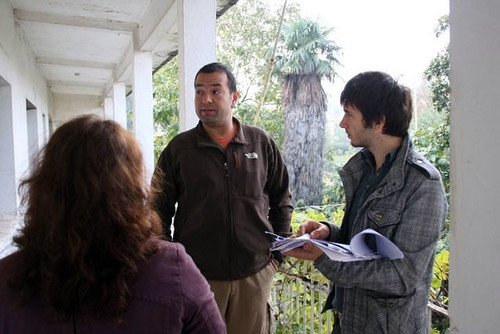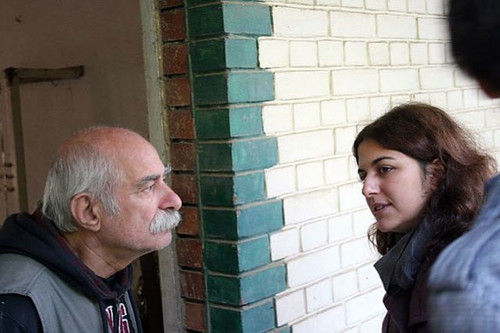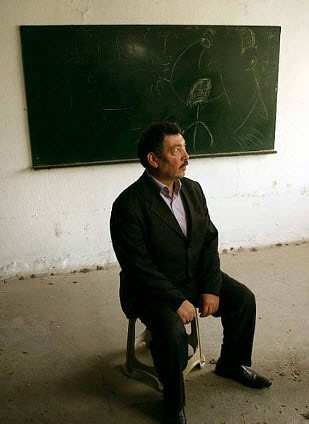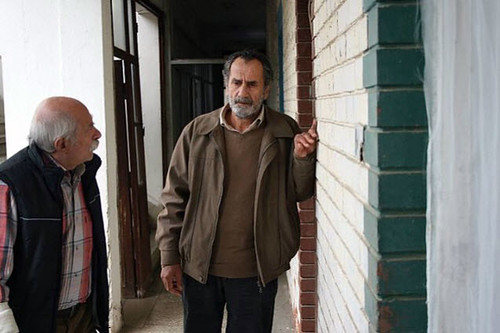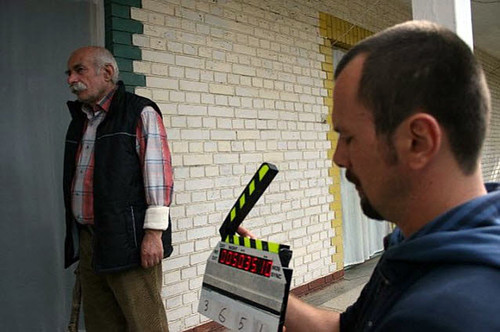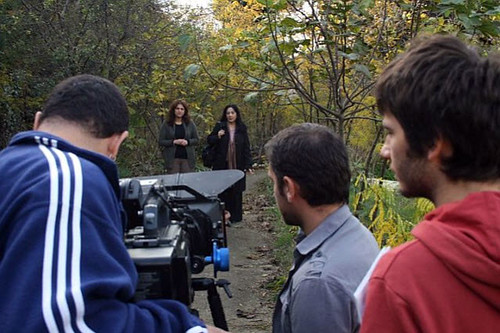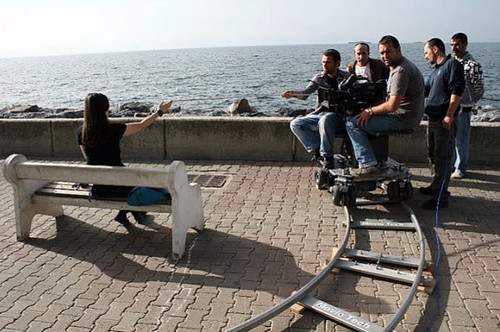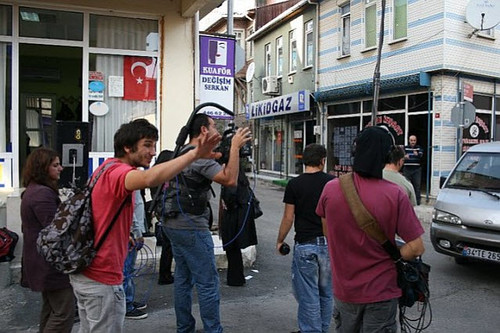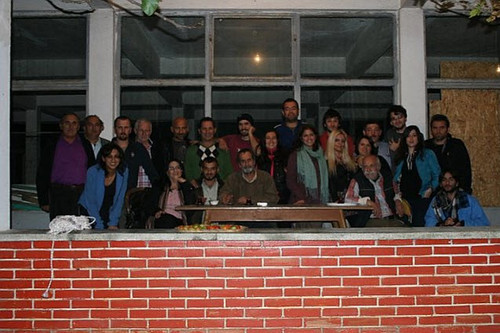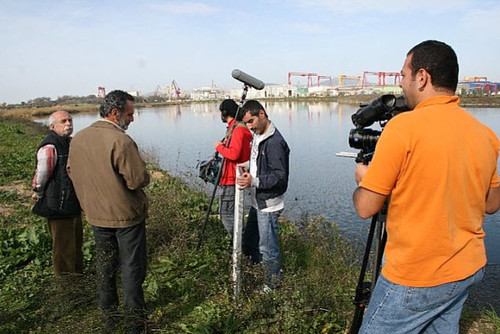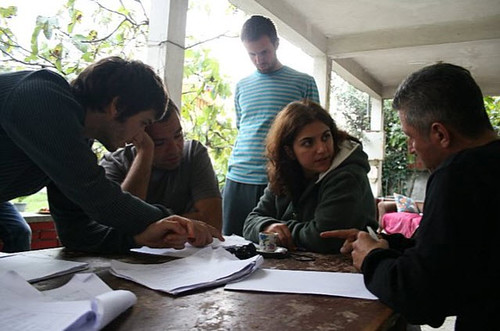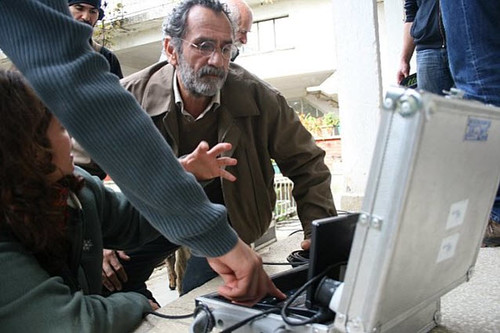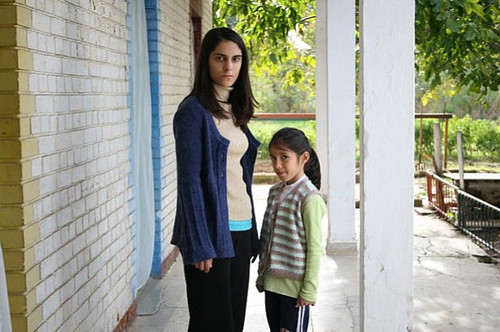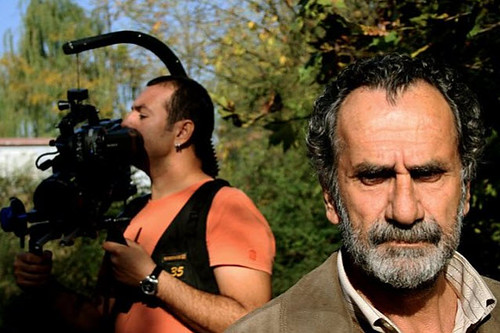Camp Armen Returned to Its Rightful Owner
Our friends in Istanbul have confirmed the return of the ownership of Camp Armen in Tuzla to the Armenian Evangelical Church of Gedik Pasha in Istanbul.
The camp was founded by Hrant Guzelian, who has tutored Hrant Dink, Rakel Dink and many orphans and children. After the Turkish authorities unjustly confiscated the camp, Hrant Dink strived and endeavored to get it back to its rightful owner. Before his assassination, he was always visiting the camp from time to time to keep an eye on it.
Today, his dream and the dream of the orphans who have grown up and built part of the camp themselves has come true. Praise be to God!
The camp was founded by Hrant Guzelian, who has tutored Hrant Dink, Rakel Dink and many orphans and children. After the Turkish authorities unjustly confiscated the camp, Hrant Dink strived and endeavored to get it back to its rightful owner. Before his assassination, he was always visiting the camp from time to time to keep an eye on it.
Today, his dream and the dream of the orphans who have grown up and built part of the camp themselves has come true. Praise be to God!
AMAA Addresses Turkish Leaders Requesting Intervention at CAMP ARMEN near Istanbul
AMAA Addresses Turkish Leaders
Requesting Intervention at CAMP ARMEN near Istanbul
Paramus, NJ ― In response to the recent news of the partial demolition of CAMP ARMEN in the Tuzla District near Istanbul, the Armenian Missionary Association of America (AMAA) has written to the President, Prime Minister and the United States Ambassador of the Republic of Turkey asking for their intervention and support.
During the partial demolition of the Camp in early May, a group of Armenians from Turkey, including some of the former students of the Youth Home of Istanbul, who grew up in Camp Armen, rushed to the site and are keeping guard day and night, thus halting further demolition of the Camp. Among those who went to the Camp was Rakel Dink, the widow of Armenian-Turkish journalist Hrant Dink.
In the letters, Zaven Khanjian, Executive Director/CEO of the AMAA, asked that the Turkish leaders strongly consider an intervention and an immediate resolution to avoid further demolition of this historically significant and beloved Camp and to secure the return of the property to its rightful owners, the Armenian Evangelical Church of Gedik Pasa in Istanbul.
“We are imploring the help of the Turkish leaders in this matter,” said Mr. Khanjian. “Camp Armen was home to over 1,500 Armenian orphans who were gathered from the depths of Anatolia and was where Hrant and Rakel Dink met, grew up and were married. The Camp was a labor of love for the orphans and it became their ‘Atlantis’ civilization. It is an important part of a very meaningful chapter in our Armenian history, and one which we do not want to lose. We pray that God will grant us all a peaceful resolution of this legal struggle.”
The AMAA calls upon other Armenian churches and organizations to raise their voices and send similar letters and requests to the leaders of the Turkish government.
Founded in 1918 in Worcester, MA, the Armenian Missionary Association of America serves the religious, educational and social needs of Armenian communities in 24 countries around the world. AMAA is a 501(c)(3) non-profit organization. For additional information, you may call AMAA at 201.265.2607 or visit the website at www.amaa.org.
Demolition of Istanbul Armenian orphanage pauses, amid outcry
During these troubling times in Syria comes a dreadful news to demolish Camp Armen of Tuzla, Turkey. As a quick history, the campsite was found and bought through the efforts of Hrant Guzelian, who also endeavored to go to the depths of Anatolia to find lost and hidden Armenian children. He brought them to Badanegan Doon below the Armenian Evangelical Church of Gedikpasha, Istanbul. Hrant Dink and Rakel Dink have lived and grown up there.
Today, Garabet Orunöz, who himself has grown up in Badanegan Doon, and many activists are joining to stop the demolition.
As a tribute to Hrant Guzelian, the father of Badanegan Doon, we share with you this touching video that we had prepared in 2007.
Note: chanitz.org administration informs the Armenian Evangelical community worldwide to support #KampArmen (search in Facebook), to stop the demolition.
Demolition that began in the early hours of the day at Tuzla Children’s Camp, also known as Kamp Armen, was stopped with the intervention of activists, members of the public and politicians that gathered at the site. The waiting continues.
Heavy demolition equipment belonging to a private company entered the Tuzla Camp around 10 AM, and began demolishing the buildings.
The camp is among the most symbolically significant of Armenian community properties unlawfully seized by the State. The camp had become a home for impoverished Armenian children who in the aftermath of 1915, were forced to come to Istanbul since Anatolia had been left devoid of Armenian schools. The school was once home to around 1500 children including Hrant Dink, Rakel Dink and Member of Parliament Erol Dora.
The camp had been in a derelict state recently, and faced the threat of demolition.
In last week’s headline, Agos used the hashtag #StopDemolitionOfKampArmen with a report on the story of the camp, and the legal struggle to secure its return to the foundation, and stop its demolition.
Uygar Gültekin, from Agos, reported that the 5 rooms where the children stayed, the room of Hrant Güzelyan, the legendary director of the camp, the chapel and the peripheral walls were demolished.
When the news of the demolition spread, a group of people gathered at the camp and succeeded in stopping the demolition.
HDP parliamentary candidates Garo Paylan, Sezin Uçar and Beste Kaplan, HDP provincial administrators, CHP Tuzla Province President Ali Çelik, Nor Zartonk activists, and former camp member Garabet Orunöz are among those gathered at the site.
Although the demolition has been thwarted for now, it is unclear what the next step will be.
How did the State seize the camp?
The land of the camp, purchased by the Gedikpaşa Armenian Protestant Church Foundation, was returned - along with the facilities constructed on the site with the efforts of the children who studied there - by the State to its first owner on the basis of the 1936 Declaration, and the seizure process of the camp was completed when the Court of Cassation approved the decree of the local court in 1987.
The foundation administration tried all legal means for the return of the camp, however the efforts remained fruitless. Even the cases filed for compensation for the facilities built on the land were inconsequential.
When in 2011, a change in the Law on Foundations triggered a process for the return of seized foundation properties; an application was made to the Foundations General Directorate for the Tuzla Children’s Camp as well. However, the Foundations General Directorate, on the basis of the legal annulment of the sale of the Tuzla Camp, did not treat the file as a ‘seized property’ file, and thus the return of the camp or the payment of compensation did not take place. The demolition of the camp, which begun today, was scheduled to begin within the month of May.
Today, Garabet Orunöz, who himself has grown up in Badanegan Doon, and many activists are joining to stop the demolition.
As a tribute to Hrant Guzelian, the father of Badanegan Doon, we share with you this touching video that we had prepared in 2007.
Note: chanitz.org administration informs the Armenian Evangelical community worldwide to support #KampArmen (search in Facebook), to stop the demolition.
Demolition of Istanbul Armenian orphanage pauses, amid outcry
Source: Agos newspaper
Demolition that began in the early hours of the day at Tuzla Children’s Camp, also known as Kamp Armen, was stopped with the intervention of activists, members of the public and politicians that gathered at the site. The waiting continues.
Heavy demolition equipment belonging to a private company entered the Tuzla Camp around 10 AM, and began demolishing the buildings.
The camp is among the most symbolically significant of Armenian community properties unlawfully seized by the State. The camp had become a home for impoverished Armenian children who in the aftermath of 1915, were forced to come to Istanbul since Anatolia had been left devoid of Armenian schools. The school was once home to around 1500 children including Hrant Dink, Rakel Dink and Member of Parliament Erol Dora.
The camp had been in a derelict state recently, and faced the threat of demolition.
In last week’s headline, Agos used the hashtag #StopDemolitionOfKampArmen with a report on the story of the camp, and the legal struggle to secure its return to the foundation, and stop its demolition.
Uygar Gültekin, from Agos, reported that the 5 rooms where the children stayed, the room of Hrant Güzelyan, the legendary director of the camp, the chapel and the peripheral walls were demolished.
When the news of the demolition spread, a group of people gathered at the camp and succeeded in stopping the demolition.
HDP parliamentary candidates Garo Paylan, Sezin Uçar and Beste Kaplan, HDP provincial administrators, CHP Tuzla Province President Ali Çelik, Nor Zartonk activists, and former camp member Garabet Orunöz are among those gathered at the site.
Although the demolition has been thwarted for now, it is unclear what the next step will be.
How did the State seize the camp?
The land of the camp, purchased by the Gedikpaşa Armenian Protestant Church Foundation, was returned - along with the facilities constructed on the site with the efforts of the children who studied there - by the State to its first owner on the basis of the 1936 Declaration, and the seizure process of the camp was completed when the Court of Cassation approved the decree of the local court in 1987.
The foundation administration tried all legal means for the return of the camp, however the efforts remained fruitless. Even the cases filed for compensation for the facilities built on the land were inconsequential.
When in 2011, a change in the Law on Foundations triggered a process for the return of seized foundation properties; an application was made to the Foundations General Directorate for the Tuzla Children’s Camp as well. However, the Foundations General Directorate, on the basis of the legal annulment of the sale of the Tuzla Camp, did not treat the file as a ‘seized property’ file, and thus the return of the camp or the payment of compensation did not take place. The demolition of the camp, which begun today, was scheduled to begin within the month of May.
Widow of Turkish-Armenian journalist remains steadfast since murder
Pastor Gilbert Leonian of the Armenian Protestant Bible Church in Marseille tells the Daily News how Rakel Dink, widow of slain Armenian-Turkish journalist Hrant Dink, has coped since her husband’s murder. The pastor adds that he himself has changed since the killing, saying, ‘The seeds of peace sewn by Hrant Dink are now sprouting inside me’
 A strong faith has helped the widow of slain journalist Hrant Dink endure the four years since she lost her husband, according to a French pastor close to the bereaved. He also said the murder has paradoxically worked to change his views on Turkey.
A strong faith has helped the widow of slain journalist Hrant Dink endure the four years since she lost her husband, according to a French pastor close to the bereaved. He also said the murder has paradoxically worked to change his views on Turkey.
Rakel Dink, who was the wife of the murdered Turkish-Armenian journalist, delivered a powerful speech at her husband’s funeral, lamenting how “murderers are raised from babies.” “If you pay attention to the text, you see that she seeks shelter in God despite pain and sorrow. You will hear the voice of a true believer. Rakel, our dear daughter, is such a strong and faithful woman,” Pastor Gilbert Leonian of the Armenian Protestant Bible Church in Marseille recently told the Hürriyet Daily News & Economic Review.
Leonian knows Rakel Dink well, and since Hrant Dink’s murder on Jan. 19, 2007, the widow has had relations with the church in Marseille even though she remains a member of the Armenian Apostolic Church.
“Rakel is a member of our congregation, but I do not want to stress her name and talk much about it,” Leonian said, relating Rakel Dink’s story to the Daily News.
Racing to the crime scene
As soon as he received news of the murder four years ago, Leonian said he called Rakel Dink in Istanbul and that she was too overcome with grief to speak. As such, Leonian said he immediately called Pastor Krikor Ağabaloğlu, the religious leader of the Armenian Protestant Church at Gedikpaşa, in Istanbul.
“I was helpless. I wanted to be there and help Rakel,” said Leonian. “I talked to Ağabaloğlu. He was on his way to the murder scene. I warned him to be careful because [a year before] Priest Andreas Santaro was murdered in Trabzon. Missionaries were facing danger. Krikor insisted on a trip to the crime scene. He said: ‘I, as a religious leader, am not in a place to think of myself. I have to be with Rakel.’ I understood him very well. If I were him, I would’ve done the same thing.”
‘Hrant showing the way’
“Rakel’s pain is naturally deeper than ours,” said Leonian. “But our son Hrant left a tremendous gap inside us which is impossible to fill. I don’t think anyone from now on will continue as courageously as he did. His heart was pounding for friendship and peace. Hrant was removing prejudices.”
Having lost a big part of his family during the 1915 events in eastern Anatolia, Leonian said he had had many prejudices against Turkey, much like many others in France’s large Armenian diaspora.
Leonian said he was forced to push his prejudices aside on his first visit to Turkey in 1999 as he rushed to help victims of the Aug. 17 Marmara earthquake that coincidentally occurred on the night of his arrival.
"It was my first time in Turkey and with Turkish people. Then, the Dink murder took place. Pain surfaced again. In the name of friendship, however, Hrant has left something beautiful and I, as a man of religion, decided to claim this heritage and now walk on his path,” Leonian said.
The pastor also said he attended a conference with a high-ranking figure from Turkey’s Religious Affairs Directorate – whose name he chose to withhold for privacy reasons – and added that they prayed together at a Paris church for the Turkish and Armenian peoples.
“The seeds of peace sewn by Hrant are sprouting now. I hope they will sprout in all of us,” he said.
Rakel meets Hrant
Rakel Dink is a member of one of Turkey’s largest Armenian clans, the Varto, also known as Vartan, of Southeast Anatolia. Born in the present-day province of Şırnak, Rakel Dink and several other children from the clan were located by then-Armenian Patriarch Shinorhk Kalustyan and brought to Istanbul for an education because there was no Armenian church or school in the region.
Pastor Hrant Küçükgüzelyan, the religious leader of the Armenian Protestant Church in Gedikpaşa, Istanbul, was also instrumental in the children’s education, transforming the basement of his church into an orphanage before opening a summer camp in the Tuzla district on the Asian side of the city for his charges.
Rakel Dink was also taken under Küçükgüzelyan’s wing, resulting in her Protestant upbringing. While at the Tuzla camp, she met and fell in love with Hrant Dink.
VERCİHAN ZİFLİOĞLU
MARSEILLE - Hürriyet Daily News
 A strong faith has helped the widow of slain journalist Hrant Dink endure the four years since she lost her husband, according to a French pastor close to the bereaved. He also said the murder has paradoxically worked to change his views on Turkey.
A strong faith has helped the widow of slain journalist Hrant Dink endure the four years since she lost her husband, according to a French pastor close to the bereaved. He also said the murder has paradoxically worked to change his views on Turkey.Leonian knows Rakel Dink well, and since Hrant Dink’s murder on Jan. 19, 2007, the widow has had relations with the church in Marseille even though she remains a member of the Armenian Apostolic Church.
“Rakel is a member of our congregation, but I do not want to stress her name and talk much about it,” Leonian said, relating Rakel Dink’s story to the Daily News.
Racing to the crime scene
As soon as he received news of the murder four years ago, Leonian said he called Rakel Dink in Istanbul and that she was too overcome with grief to speak. As such, Leonian said he immediately called Pastor Krikor Ağabaloğlu, the religious leader of the Armenian Protestant Church at Gedikpaşa, in Istanbul.
“I was helpless. I wanted to be there and help Rakel,” said Leonian. “I talked to Ağabaloğlu. He was on his way to the murder scene. I warned him to be careful because [a year before] Priest Andreas Santaro was murdered in Trabzon. Missionaries were facing danger. Krikor insisted on a trip to the crime scene. He said: ‘I, as a religious leader, am not in a place to think of myself. I have to be with Rakel.’ I understood him very well. If I were him, I would’ve done the same thing.”
‘Hrant showing the way’
“Rakel’s pain is naturally deeper than ours,” said Leonian. “But our son Hrant left a tremendous gap inside us which is impossible to fill. I don’t think anyone from now on will continue as courageously as he did. His heart was pounding for friendship and peace. Hrant was removing prejudices.”
Having lost a big part of his family during the 1915 events in eastern Anatolia, Leonian said he had had many prejudices against Turkey, much like many others in France’s large Armenian diaspora.
Leonian said he was forced to push his prejudices aside on his first visit to Turkey in 1999 as he rushed to help victims of the Aug. 17 Marmara earthquake that coincidentally occurred on the night of his arrival.
"It was my first time in Turkey and with Turkish people. Then, the Dink murder took place. Pain surfaced again. In the name of friendship, however, Hrant has left something beautiful and I, as a man of religion, decided to claim this heritage and now walk on his path,” Leonian said.
The pastor also said he attended a conference with a high-ranking figure from Turkey’s Religious Affairs Directorate – whose name he chose to withhold for privacy reasons – and added that they prayed together at a Paris church for the Turkish and Armenian peoples.
“The seeds of peace sewn by Hrant are sprouting now. I hope they will sprout in all of us,” he said.
Rakel meets Hrant
Rakel Dink is a member of one of Turkey’s largest Armenian clans, the Varto, also known as Vartan, of Southeast Anatolia. Born in the present-day province of Şırnak, Rakel Dink and several other children from the clan were located by then-Armenian Patriarch Shinorhk Kalustyan and brought to Istanbul for an education because there was no Armenian church or school in the region.
Pastor Hrant Küçükgüzelyan, the religious leader of the Armenian Protestant Church in Gedikpaşa, Istanbul, was also instrumental in the children’s education, transforming the basement of his church into an orphanage before opening a summer camp in the Tuzla district on the Asian side of the city for his charges.
Rakel Dink was also taken under Küçükgüzelyan’s wing, resulting in her Protestant upbringing. While at the Tuzla camp, she met and fell in love with Hrant Dink.
VERCİHAN ZİFLİOĞLU
MARSEILLE - Hürriyet Daily News
Personal Statement on Kamp Armen, by Garabet Orunöz (Turkey)
Deaf Friends,
Kamp Armen was our ATLANTIS which We had built with our own, very hands. I won’t say much... I was sent to Kamp Armen, because I was orphaned. My prayers are for Sara. Makasçi who sent me there, for Hrant Küçükgüzelyan who was our constitutive principal and for Hrant Dink who had been struggling against the camp’s seizure, May God bless them all!
Kamp Armen was the name of our childhood house. I had learned ‘the art of living’ in there. I had never seen my mother, but was never deprived of love. I had never felt that it was necessary to hide away the tears.
In Kamp Armen, I had learned not only to share, but also to jealous... the glory of success and to concede defeat; to come to terms... the value of having few, and that sometimes, too many is weary.
I got bored sometimes. I had tried to escape for a couple of rimes. I was caught. I got the bashing.

I was surrounded with nature, with our animals. We had a horse, a dog. We even had a couple of monkeys: cows, sheep, goats, turkeys, gooses, ducks, chickens, bees... I had learned how to take care of these animals; how to inoculate a tree and get three different fruits from the same branch in there.
I had learned the smell of the earth after rain in Kamp Armen. . . to look for the mushrooms, which I wiped on my trousers, in its garden; in the garden where I had also found my orphan sister afterwards.
I had learned how to light a fire in cold winter nights; to dream about my future in hot summer days, and not to lie under my circumstances in Kamp Armen.
I had learned not to let anyone to judge me when I am right and not to judge anybody for his/her rights; but to listen, but also to question... to resist for my rights and to standd still when I know I am right in Kamp Armen. I had learned to have a simple way of life; to say yes, and to say no; to say I want to and to say I don’t want to in Kamp Armen.
I had learned to finish school season with one outfit; to be clean, to appreciate kinship, teach it to the one who does not...
I had also learned in there to speak in short; that everything has an end, including the life itself.
I had learned that one has three rights to ask for (and I saved them for the end):
One, to respect hard work; two, to say ‘I love you’ and finally; three, to lose... I had learned them all, in Kamp Armen.
Garabet Orunöz
Kamp Armen was our ATLANTIS which We had built with our own, very hands. I won’t say much... I was sent to Kamp Armen, because I was orphaned. My prayers are for Sara. Makasçi who sent me there, for Hrant Küçükgüzelyan who was our constitutive principal and for Hrant Dink who had been struggling against the camp’s seizure, May God bless them all!
Kamp Armen was the name of our childhood house. I had learned ‘the art of living’ in there. I had never seen my mother, but was never deprived of love. I had never felt that it was necessary to hide away the tears.
In Kamp Armen, I had learned not only to share, but also to jealous... the glory of success and to concede defeat; to come to terms... the value of having few, and that sometimes, too many is weary.
I got bored sometimes. I had tried to escape for a couple of rimes. I was caught. I got the bashing.

I was surrounded with nature, with our animals. We had a horse, a dog. We even had a couple of monkeys: cows, sheep, goats, turkeys, gooses, ducks, chickens, bees... I had learned how to take care of these animals; how to inoculate a tree and get three different fruits from the same branch in there.
I had learned the smell of the earth after rain in Kamp Armen. . . to look for the mushrooms, which I wiped on my trousers, in its garden; in the garden where I had also found my orphan sister afterwards.
I had learned how to light a fire in cold winter nights; to dream about my future in hot summer days, and not to lie under my circumstances in Kamp Armen.
I had learned not to let anyone to judge me when I am right and not to judge anybody for his/her rights; but to listen, but also to question... to resist for my rights and to standd still when I know I am right in Kamp Armen. I had learned to have a simple way of life; to say yes, and to say no; to say I want to and to say I don’t want to in Kamp Armen.
I had learned to finish school season with one outfit; to be clean, to appreciate kinship, teach it to the one who does not...
I had also learned in there to speak in short; that everything has an end, including the life itself.
I had learned that one has three rights to ask for (and I saved them for the end):
One, to respect hard work; two, to say ‘I love you’ and finally; three, to lose... I had learned them all, in Kamp Armen.
Garabet Orunöz
Preparing a Movie on Camp Armen (Badanegan Doon) in Tuzla, Turkey (by Mr. Garabet Orunöz)
In Which Conditions Are the Armenians from Armenia Living in Turkey?
Many of us do not know about the whereabouts of the Armenians in Turkey, and the conditions under which they are living. Very few, following the news, may know that today, in Istanbul, Armenians from Armenia have migrated to Turkey, looking for work. Many have taken their families with them, which creates difficult conditions, where the parents will have to work and the children will have to go to school.
The Armenian citizens of Turkey, and the Armenian schools do their best to help the Armenian children learn the Armenian language, despite the restrictions in Turkey.
Below are few of the photos that we received from Mr. G. Orunöz. They are the photos of Armenian children, who are being reared as Armenian, learning the language, the history and the culture.








The Armenian citizens of Turkey, and the Armenian schools do their best to help the Armenian children learn the Armenian language, despite the restrictions in Turkey.
Below are few of the photos that we received from Mr. G. Orunöz. They are the photos of Armenian children, who are being reared as Armenian, learning the language, the history and the culture.








Three Armenian Evangelicals from Turkey defending the Armenian Genocide!
Hrant Dink believed in speaking the truth and he paid the price. Rev. Krikor AghabalOghlu believed in telling the Turkish community the truth about the Armenian Genocide, and he was imprisoned and receives threats on his life to this day. Yet, he continues to preach. Hrant Guzelian believed in his vision to bring all the Armenian orphans and children from Eastern Turkey to Istanbul and teach them Armenian. There was an attempt to kill him, but he survived and he was later imprisoned, only to leave to France by force.
Each of them were given the opportunity to leave Turkey, and Rev. Krikor AghabalOghlu still receives invitations to leave his birthplace, where the Armenian Evangelical Church was born, but he refuses to leave and decides to stay.
No... they are not the heroes of the 1915. These are our heroes today!
Would you do the same? Would you talk about injustice even if your own safety and security is at stake? Most of the time we are afraid to even write...



Hrant Guzelian, Hrant Dink, and Rev. Krikor AghabalOghlu
Each of them were given the opportunity to leave Turkey, and Rev. Krikor AghabalOghlu still receives invitations to leave his birthplace, where the Armenian Evangelical Church was born, but he refuses to leave and decides to stay.
No... they are not the heroes of the 1915. These are our heroes today!
Would you do the same? Would you talk about injustice even if your own safety and security is at stake? Most of the time we are afraid to even write...



Hrant Guzelian, Hrant Dink, and Rev. Krikor AghabalOghlu
Տիկին Ռաքէլ Տինք
 Տիկին Ռաքէլ Տինք այրին է անարգօրէն ահաբեկուած Հրանդ Տինքի: Ան ծնած է Սիլոփիի Հայկական Վարդօ գերդաստանի բազմազաւակ մէկ ընտանիքին մէջ: Հայրը՝ Սիյամենտ Եաղպասան, Վարդօ գերդաստանի աւագը, մէկ շառաւիղն է հայկական արեւէլեան նահանգներէն տարագրուած իր ընտանիքին, որ եկած եւ բնակութիւն հաստատած է Սիլոփի, Ճուտի լերան ստորոտը: Մայրը՝ Տելալ, կը մահանայ շատ կանուխ, երբ Ռաքէլ ութ տարեկան էր:
Տիկին Ռաքէլ Տինք այրին է անարգօրէն ահաբեկուած Հրանդ Տինքի: Ան ծնած է Սիլոփիի Հայկական Վարդօ գերդաստանի բազմազաւակ մէկ ընտանիքին մէջ: Հայրը՝ Սիյամենտ Եաղպասան, Վարդօ գերդաստանի աւագը, մէկ շառաւիղն է հայկական արեւէլեան նահանգներէն տարագրուած իր ընտանիքին, որ եկած եւ բնակութիւն հաստատած է Սիլոփի, Ճուտի լերան ստորոտը: Մայրը՝ Տելալ, կը մահանայ շատ կանուխ, երբ Ռաքէլ ութ տարեկան էր:Թէեւ կորսնցուցած էին իրենց լեզուն, Վարդոյի Հայերը կը պահէին իրենց Հայ Քրիստոնէայ ըլլալու գիտակցութիւնը: Սիլոփիի այլ մանուկներու եւ իր երկու եղբայրներուն հետ՝ փոքրիկ Ռաքէլ կը ղրկուի Հրանդ Կիւզէլեանի վարած Պատանեկան Տունը. իր առաջին կայանը կ՛ըլլայ Թուզլայի ՔԱՄԲ ԱՐՄԷՆ-ը-, որ եկող մանուկները կը դիմաւորէր «Արմէնակներ եւ Արմէնուհիներ, Բարի Եկաք Քամբ Արմէն» գրութիւնը ճակատնոցի վերածած: Հոն եւ Պոլսոյ Պատանեկան կրթարանէն ետք՝ կանոնաւոր դպրոցը կ՛արգիլուի իրեն. իսկ ինք կը շարունակէ ուսանիլ մասնաւոր դասերու հետեւելով:
1976-ին ան կ՛ամուսնանայ Հրանդ Տինքի հետ, որուն ծանօթացած էր Թուզլայի Քամբ Արմէնին մէջ. հոն ալ կը կատարուի իրենց պսակադրութիւնը, յաղթահարելէ ետք կարգ մը ընտանեկան արգելքներ: Անոնք կ՛օրհնուին երեք զաւակներով՝ Պայծառ-Տելալ, Արարատ եւ Սերա. նաեւ Աստուած կ՛օրհնէ զիրենք երկու թոռնուհիներով՝ Նորա եւ Նարէ Տինք:
Տիկին Ռաքէլ ոչ միայն կողակից, այլ նաեւ բաժնեկից եղաւ իր ամուսնոյն, իր «Ջութակ»ին՝ Հրանդին, անոր տարած պայքարին եւ ջանքին մէջ: Քամբ Արմէնի հոգը եւ գրաւման դատերը, Եկեղեցիին եւ դպրոցին բնականոն կեանքին դիմաց խոչընդոտները, եւ վերջապէս՝ «Ակոս» թերթով աւելի ծանօթ՝ մարդկային իրաւունքներու, ան Ցեղասպանութեան ճանաչման անոր ոդիսականը, ան վերցուց իր «Ջութակ»ին հետ, մինչեւ անոր նահատակութիւնը: Տիկին Ռաքէլին նպատակը եղած է ըլլալ բարի անձ մը, առաքինի կողակից, մայր եւ մամիկ, ըստ իր վկայութեան՝ «այնպէս ինչպէս Յիսուս կ՛ուզէ որ ըլլամ:»

